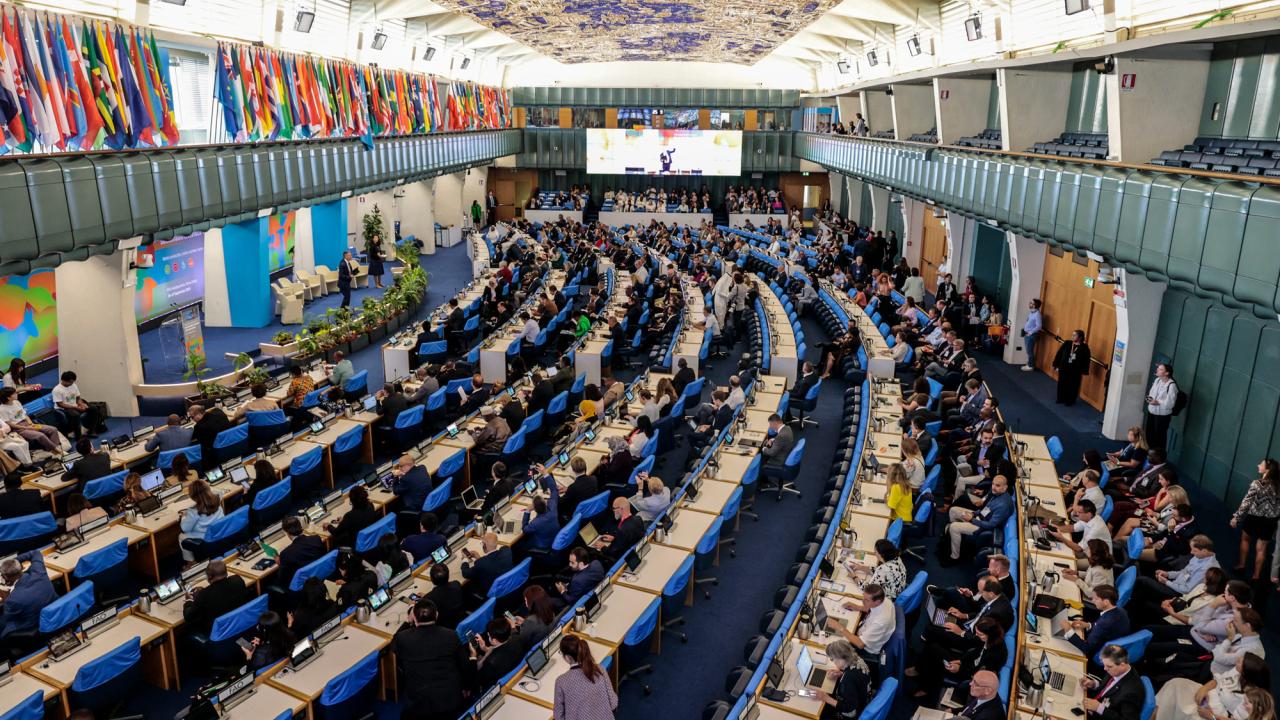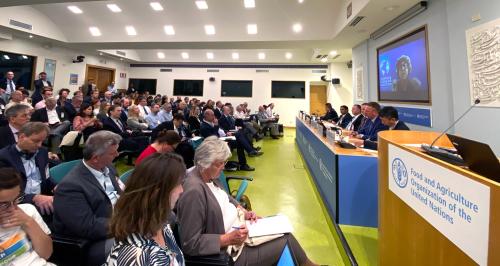
United Nations FAO Report on Livestock Methane is Must-Read
Report with input from UC Davis experts, sets the standard for evaluating methane from animal agriculture and rice production
So, it might not be the type of reading you toss in your beach bag, but according to people who know, it’s something you nevertheless should read – or at least read about.
“It is very technical, but it is standard setting,” says Frank Mitloehner, an expert in animal agriculture and air quality from University of California, Davis, where he also directs the CLEAR Center, an organization committed to finding better, more sustainable ways to grow the world’s food.
Read the report
The document in question, “Methane Emissions in Livestock and Rice Systems,” was unveiled Sept. 25 in Rome by the United Nations Food and Agriculture Organization at its Global Conference on Sustainable Livestock Transformation. It was co-chaired by UC Davis Professor and Associate Dean of Global Engagement, Ermias Kebreab, and Michelle Cain Lecturer in Environmental Analytics at the Cranfield Environment Center at Cranfield University. Covering everything from where the gas comes from and how it’s measured to the way it warms the atmosphere and what we can do to put a figurative lid on it, it’s as close to being the definitive work as anything we’ve ever known, says Mitloehner, who co-authored the report with 53 other “international scientists and experts.”
“For the first time, FAO, through the Livestock Environmental Assessment and Performance Partnership (LEAP), provides a comprehensive picture and robust analysis of methane emissions in livestock and rice systems,” says the forward.

The publication comes at a pivotal time in our grasp of methane and our need to curtail global warming. The planet we inhabit just experienced its hottest summer ever, with a plethora of wild, destructive weather events adding insult to injury.
According to National Geographic, “’Virtually no one on Earth escaped the influence of global warming during the past three months,’ Andrew Pershing, Climate Central’s vice president for science, said in a press release. ‘In every country we could analyze, including the southern hemisphere where this is the coolest time of year, we saw temperatures that would be difficult – and in some cases nearly impossible – without human-caused climate change. Carbon pollution is clearly responsible for this season’s record-setting heat.’”
At the same time, Mitloehner asserts, scientists have come to a better understanding of the unique behavior of methane, and that’s reflected in the study.
“This is a huge advance of where we were 15 years ago,” he says.
A potent greenhouse gas in the short term, CH4 was long viewed simply as carbon dioxide on steroids, to put it bluntly. And yet, it’s anything but simplistic. True, it warms the atmosphere many times more than CO2, the most prolific of the GHGs. It’s also short lived, lasting for about a decade before it’s broken down into carbon dioxide and water vapor, with a strong warming potential during that decade. That doesn’t happen with carbon dioxide. In stark contrast, it’s a stock gas that hangs over our planet for hundreds of years – or more, warming all the while.
Given methane’s distinctive properties, if emissions are held constant, warming is flat. If emissions are mitigated – something the paper’s authors call for – warming will decrease.
That puts agriculture in an enviable position to do even more than feed a rapidly exploding world population. The methane emissions for which it is often maligned – ironically enough – give it a superpower, Mitloehner maintains. In short, the industry can be part of the climate solution.
“If we mitigate methane … then we can reduce warming. And as a sector that has [methane as its main greenhouse gas], animal agriculture is one of the very few sectors in the world that has the ability to do that,” he says.
Farmers in California are making great strides toward a stretch goal that is calling for a 40% reduction in methane emissions by 2030, progress Mitloehner believes has much to do with the state’s voluntary, incentive-based approach. He calls for governments worldwide to review “Methane Emissions in Livestock and Rice Systems” and determine how best to put its recommendations into practice.
Highly technical and complex, it is not light reading, Mitloehner concedes. But it is as “good as has ever been done.”
We now need to go about and communicate its content in an effective way,” he says.
Media Resources
Media contact: Joe Proudman at jproudman@ucdavis.edu
